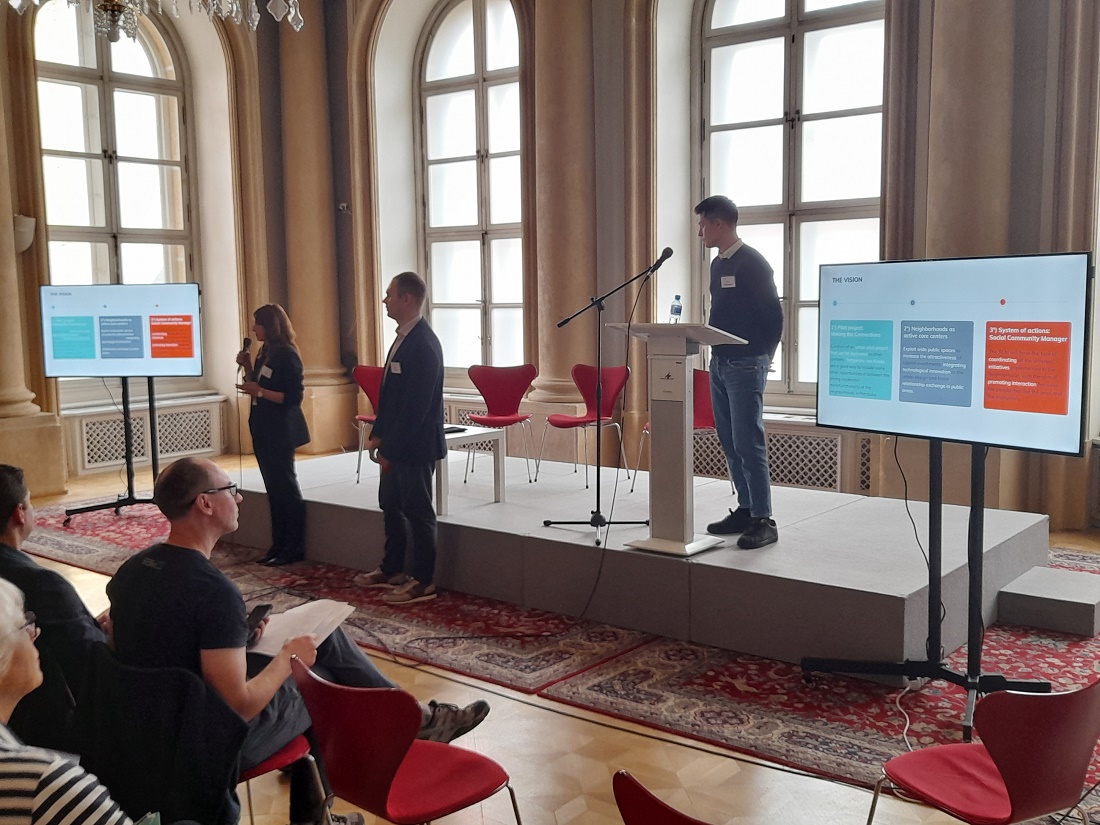Richard Blyth FRTPI is the RTPI’s Head of Policy, Practice and Research.

We have all suffered the drawbacks of online-only working. But it is especially in transnational organisations where the advantages of being able to meet face to face are striking. So it was with great pleasure that I was able to support the RTPI at the recent General Assembly of the European Council of Spatial Planners (ECTP-CEU) in Slovakia. This is particularly important in 2021-23 as it is an RTPI member, Janet Askew, who is President of the ECTP-CEU, an organisation the RTPI helped found in 1985 and of which it has remained a member ever since.
In a packed agenda the General Assembly dealt with a range of business matters including, with great pleasure, approving the application to join ECTP-CEU from the Polish Association of Planners (TUP). (We made some very valuable links with TUP at the World Urban Forum in Poland this summer.) Later we heard from Tomasz Majda, President of TUP and Piotr Lorens, (Vice President), about the challenges of working with governments which have a penchant for planning ‘reform’. One of the great benefits of membership of an umbrella body like ECTP-CEU is to be able to compare the situation in different countries. One key finding is the high esteem in which the UK planning system is held. Another is how similar political pressures are across Europe.
In her opening speech at the conference on the second day of the ECTP-CEU event, Janet Askew told of recent research commissioned by ESPON, from which it is evident that our planning systems are coming closer together. A similar set of objectives crop up, namely sustainable development, environmental protection, citizen engagement, as well as planning reform, which is on the agenda in many countries. And although the EU doesn’t have any competence in planning, it encourages member states to co-operate across borders, and the research verifies that this is increasingly happening, influenced by sectoral policies which aim to address cross-border problems.
Janet Askew pointed out that research reveals other disturbing findings. There is a decline in the influence of spatial planning in some countries, resulting in patterns of development which bear no relationship to the plan. There is a lack of integration. There are demands for de-regulation. Demands for investment result in attempts to encourage economic investment at the expense of other objectives, such as the achievement of net zero cities and lifestyles. Planning is dismissed as too restrictive. Planning is blamed for failures of government and the market to provide, for example, decent affordable housing. And in many countries planners struggle to maintain a distinct identity (the position in the UK is envied here).
At the two-part conference on ‘public mass housing neighbourhoods’, organized by the ECTP-CEU, Czech Planning association (AUÚP) and the SPA-CE.NET organization of universities, we heard from the president about the history and continued relevance of the ECTP-CEU; from past president Virna Bussadori, who showed how mass housing is also present in western countries such as Italy; from Piotr Lorens, City Architect of Gdansk; from Jitka Molnárová about how ‘bottom-up’ regeneration can work around the world; and from Martin Berežný about current projects in Bratislava .
One of the great strengths of the ECTP-CEU is the annual Young Planners’ Workshop which formed the second part of the day – finally held in person. I was personally struck by the high standard of entries from young planners around Europe, many of whom were combining studying for a master’s degree with working in planning offices and studios. One group from the Politecnico di Torino actually opted to study the huge housing estate at Petržalka south of Bratislava itself – an impressive choice given it meant working, and also staying, in a foreign setting to do so. With 50,000 flats, this is one of the largest ever housing estates built in Europe and currently is a sought-after residential location.

Young planners from Politecnico di Torino answer questions
I think planners were one of the worst-hit professions during lockdown because we need to be out and about in the environment. Equally we are some of the greatest beneficiaries of the return to in-person activity. So, the best planning conferences always include visiting planning projects in the host cities. Bratislava was no exception. We had the opportunity to break out of the tourist zone of the old town to see recent developments. A factory redevelopment site east of the city centre had some compelling lessons. Here we saw five new 30 storey towers, just metres apart, in a Zara Hadid residential development which a subsequent master plan had to accommodate. They looked down on a new national theatre district, for which a new tram line is planned, although local planners suggest that this might be some time in actually being built.

New towers on Bratislava skyline
I came away grateful for the opportunity to meet different planners from different countries, to hear about their issues and good practices, feeling confident in the knowledge that the future of the ECTP-CEU is secure and that the RTPI has an important role to play.


